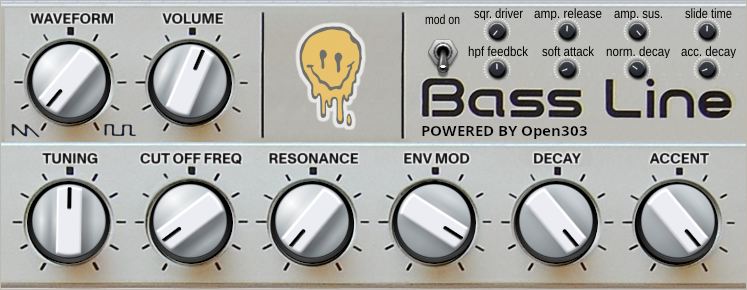Roland TB-303 Audio Plugin clone
Unlock the iconic sound of the legendary Roland TB-303 on your Windows, MacOS, or Linux system. This VST3, LV2, and AU compatible plugin is a Juce port of Robin Schmidt’s renowned Open303 DSP engine, bringing you the perfect TB-303 clone.
About JC303

JC303 is Bass Synthesizer Audio Plugin, clone of Roland TB-303. This project is a JUCE port of Robin Schmidt’s Open303 DSP engine, with a mission to make Open303 accessible across different platforms and plugin formats. Our goal is to provide musicians and producers with a seamless experience to harness the incredible power of the Open303 DSP engine.
Additionally, the JC303 project aspires to deliver a faithful clone emulation of the TB-303 step sequencer. We understand that the TB-303 isn’t just about its distinctive sound; it’s about the entire gear and the iconic sequencer that defines its unique character.
About Open303
Open303 embodies the essence of open source development. It all began when Robin Schmidt called upon a community of passionate individuals to embark on the quest for the ultimate TB-303 clone on the KVRAudio forum. Read the Forum Post.
Over the span of a decade, enthusiasts dived deep into their oscilloscopes, engaged in circuit reverse engineering analyses, and passionately debated the inner workings of our beloved TB-303. The result? The finest emulation of the TB-303 ever created, and it’s open source! Achieving high-quality Virtual Analog (VA) filters in the DSP realm is notoriously challenging, but Open303 conquers this frontier with excellence.
Key Features
- Pure Sound: Experience the authentic TB-303 sound reproduction.
- Cross-Platform Compatibility: Available for Windows, MacOS, and Linux.
- Plugin Versatility: VST3, LV2, and AU compatibility for seamless integration with your favorite DAWs.
- Future-Ready: An evolving roadmap includes a faithful step sequencer, capturing the essence of the original TB-303 experience.
Whether you’re a seasoned producer or an aspiring artist, this plugin is your gateway to the timeless sound of the TB-303.
Open303 and JC303 is an open-source project driven by passionate individuals like you. Together, we’re redefining the possibilities of audio emulation.
Disclaimer: Roland and TB-303 are registered trademarks of Roland Corporation. This product is not affiliated with or endorsed by Roland Corporation.